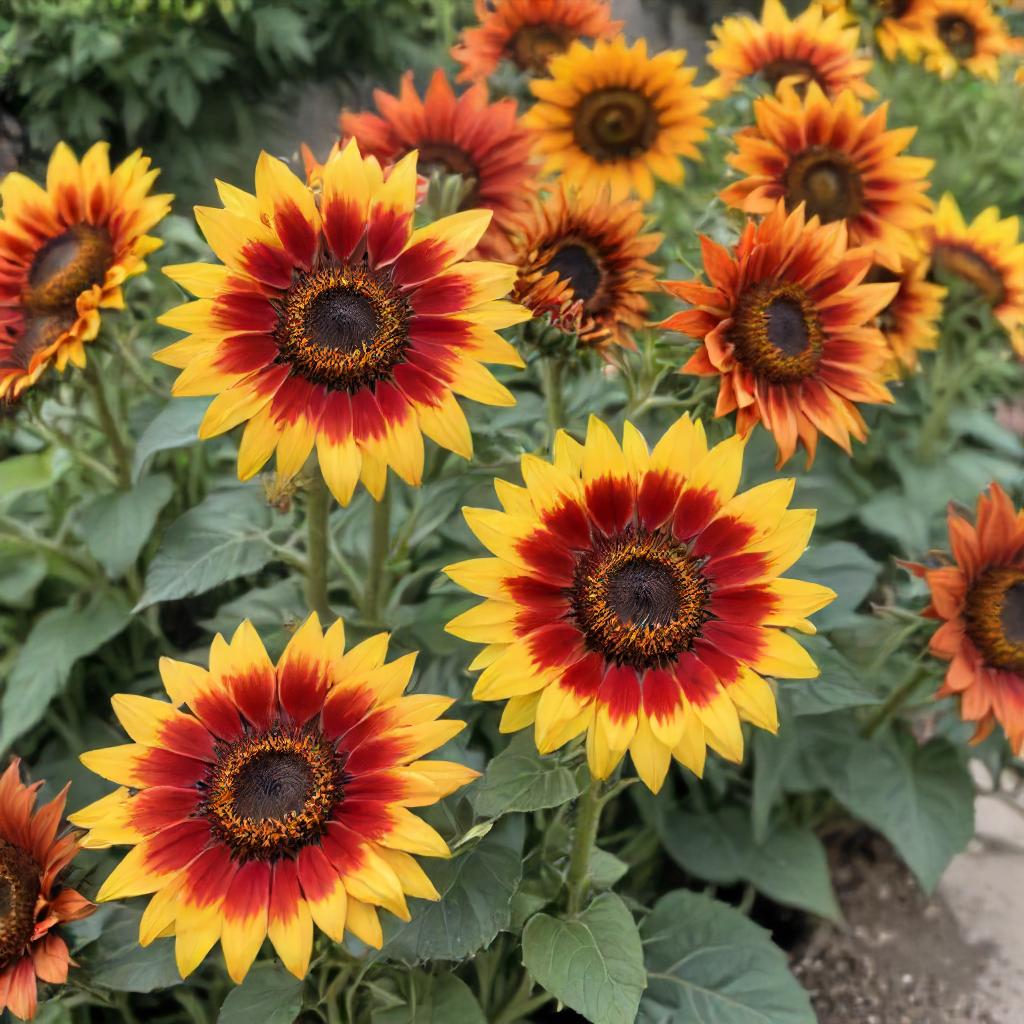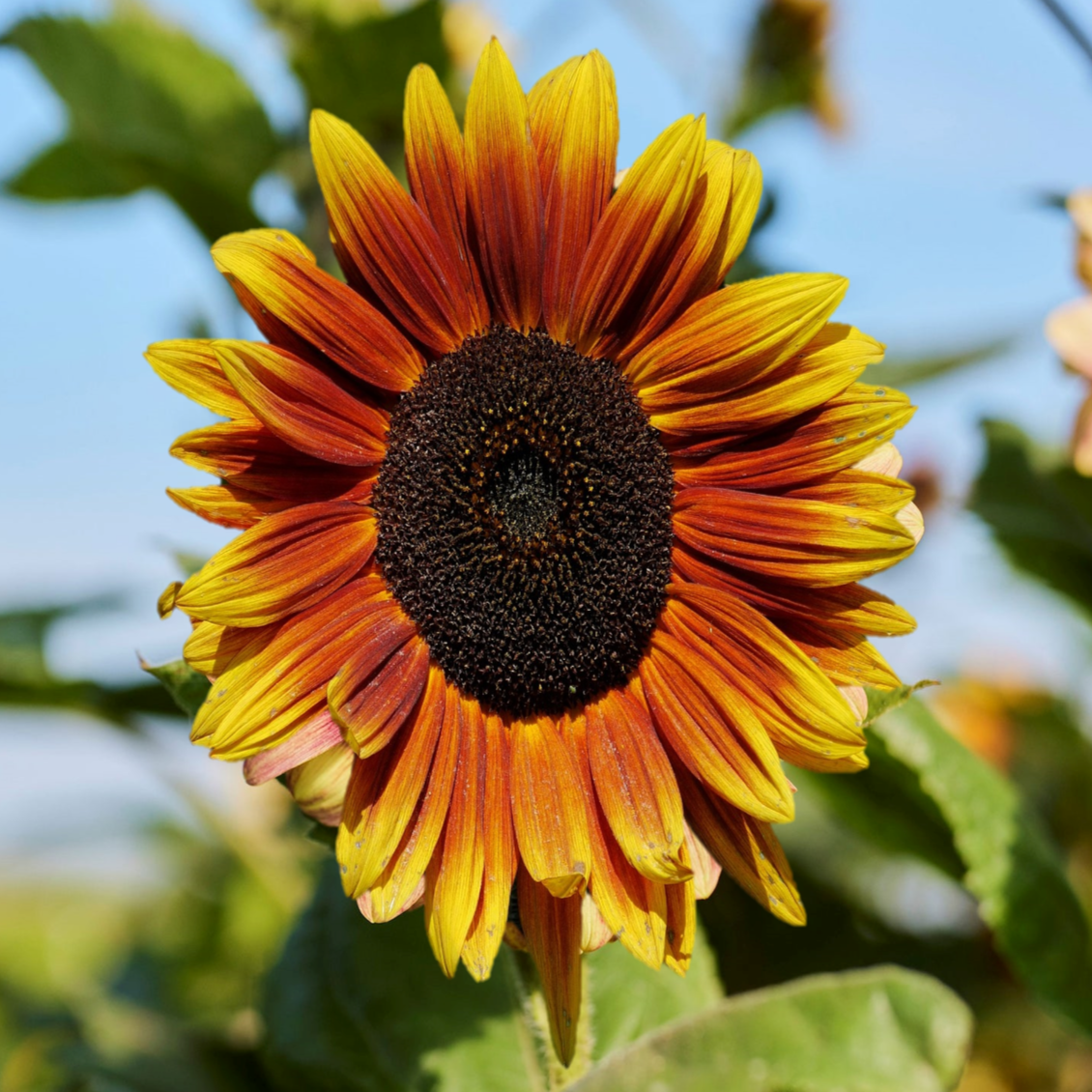- Hardiness Zone: 2-11 Annual
- Hardiness Zone: 5-9 Can Be Grown As A Short Lived Perennial
Seed Depth: 1/2 inch
Seed Spacing: 12–18 inches
Row Spacing: 24 inches
Sunlight: Full sun
Days to Sprout: 7–14 days
Days to Maturity: 80–100 days
Growth Habit: Branching
Sunlight: Thrives in full sun, needing at least 6–8 hours of daily light.
Soil Type: Prefers well-drained, sandy or loamy soil with a pH of 6.0–7.5.
When to Plant: Sow seeds outdoors after the last frost, when soil temperatures are warm.
Direct Sowing: Plant seeds 1/2 inch deep and space them 12–18 inches apart in rows.
Indoor Sowing: Start seeds indoors 4–6 weeks before the last frost and transplant with care to avoid root disturbance.
Succession Planting: Plant every 2–3 weeks for continuous blooms throughout the season.
Watering: Moderate water needs; water deeply but allow the soil to dry between watering.
Fertilizing: Apply a light, balanced fertilizer if needed, avoiding over-fertilizing to maintain strong blooms.
Pruning: Deadhead flowers regularly to encourage prolonged blooming.
Pest and Disease Control: Naturally pest-resistant but monitor for aphids or fungal diseases, especially in wet conditions.
When to Harvest: Harvest blooms when fully open for floral arrangements or allow seed heads to mature for seed collection.
How to Harvest: Use sharp scissors to cut blooms with stems or leave seed heads to dry on the plant for collection.
Seed Collection: Let flower heads dry completely on the plant before gathering seeds for future planting or crafting.
Storing Seeds: Store seeds in an airtight container in a cool, dry place for replanting.
Plant Characteristics
Appearance: Bold, multi-colored blooms featuring deep red centers surrounded by orange and yellow petals.
Height: Grows 3–5 feet tall.
Growth Habit: Branching and vigorous, producing multiple blooms over the growing season.
Flavor and Culinary Uses
Flavor Profile: Seeds are mild and nutty when roasted.
Culinary Uses: Seeds can be harvested for roasting or baking, and petals can be used as an edible garnish for salads, desserts, or drinks.
Companion Planting Tips
Best Companions: Grows well with squash, beans, and cucumbers, providing natural pest deterrence and support.
Avoid: Avoid planting near potatoes, as sunflowers may inhibit their growth.
Common Issues and Solutions
Leggy Growth: Ensure plants receive full sun to maintain sturdy and compact growth.
Pests: Treat occasional aphid infestations with neem oil or insecticidal soap.
Fungal Diseases: Space plants properly and water at the base to prevent mildew or rot.
Seeds Per Packet
| 2g | Approximately 30 |
| 3g | Approximately 45 |
| 4g | Approximately 60 |
| 5g | Approximately 75 |
Plant Characteristics
Appearance: Bold, multi-colored blooms featuring deep red centers surrounded by orange and yellow petals.
Height: Grows 3–5 feet tall.
Growth Habit: Branching and vigorous, producing multiple blooms over the growing season.
Flavor and Culinary Uses
Flavor Profile: Seeds are mild and nutty when roasted.
Culinary Uses: Seeds can be harvested for roasting or baking, and petals can be used as an edible garnish for salads, desserts, or drinks.
Companion Planting Tips
Best Companions: Grows well with squash, beans, and cucumbers, providing natural pest deterrence and support.
Avoid: Avoid planting near potatoes, as sunflowers may inhibit their growth.
Common Issues and Solutions
Leggy Growth: Ensure plants receive full sun to maintain sturdy and compact growth.
Pests: Treat occasional aphid infestations with neem oil or insecticidal soap.
Fungal Diseases: Space plants properly and water at the base to prevent mildew or rot.
Seeds Per Packet
| 2g | Approximately 30 |
| 3g | Approximately 45 |
| 4g | Approximately 60 |
| 5g | Approximately 75 |






Share and get 15% off!
Simply share this product on one of the following social networks and you will unlock 15% off!